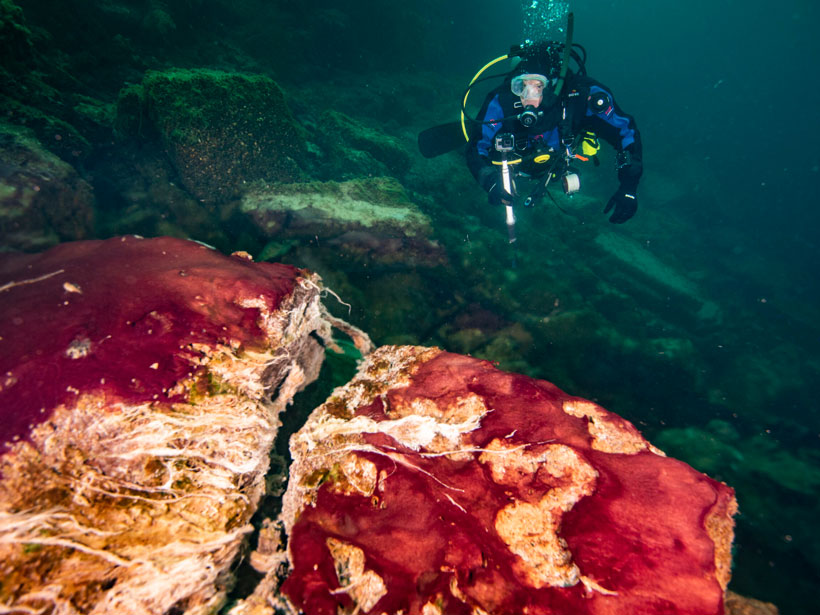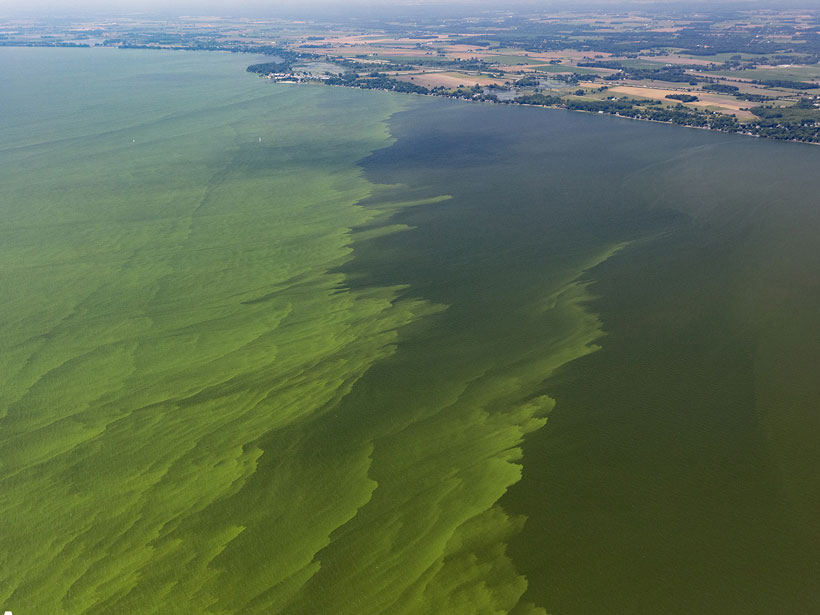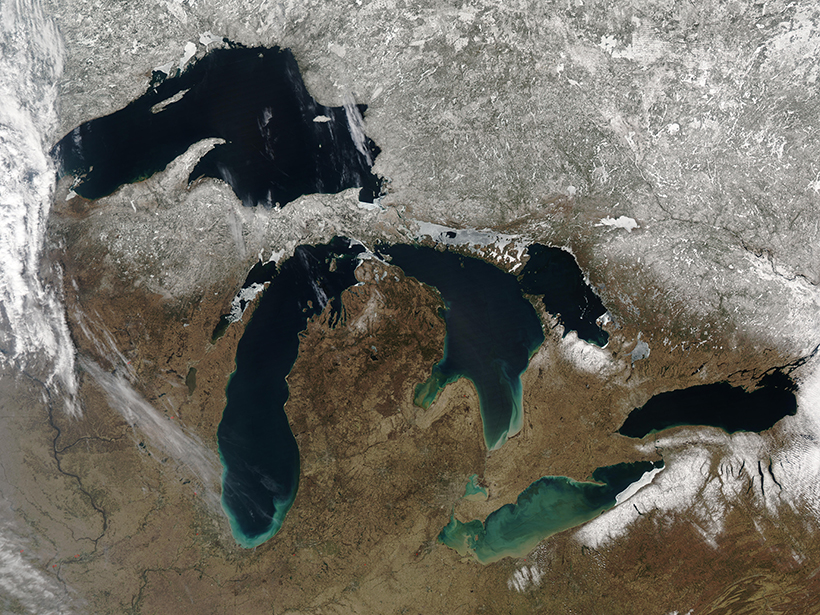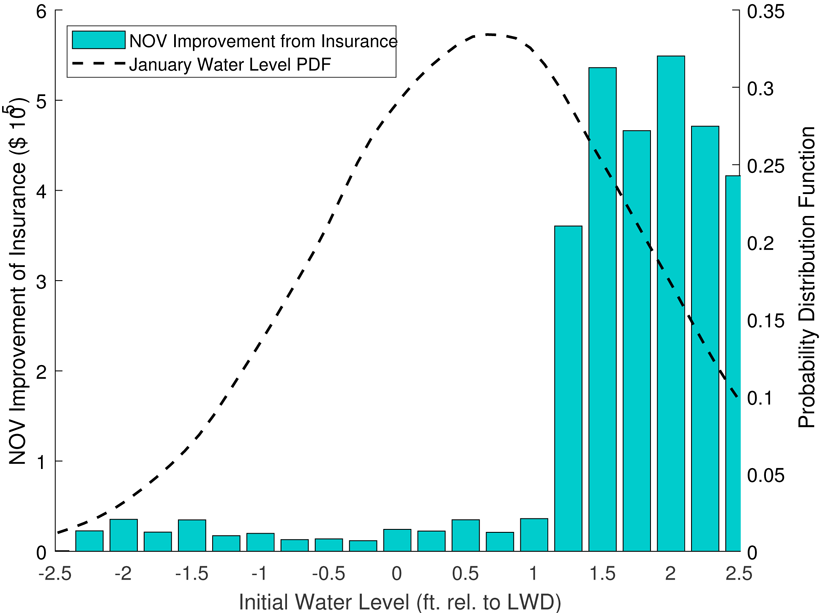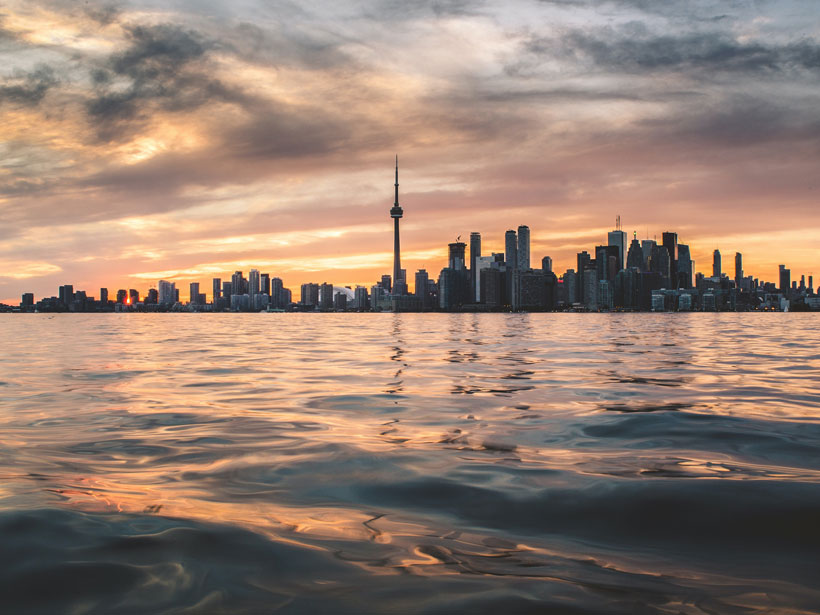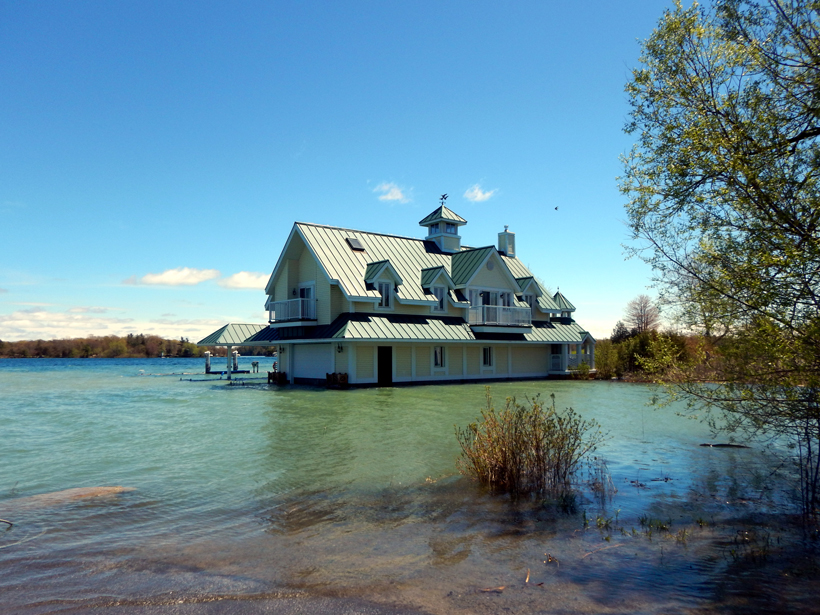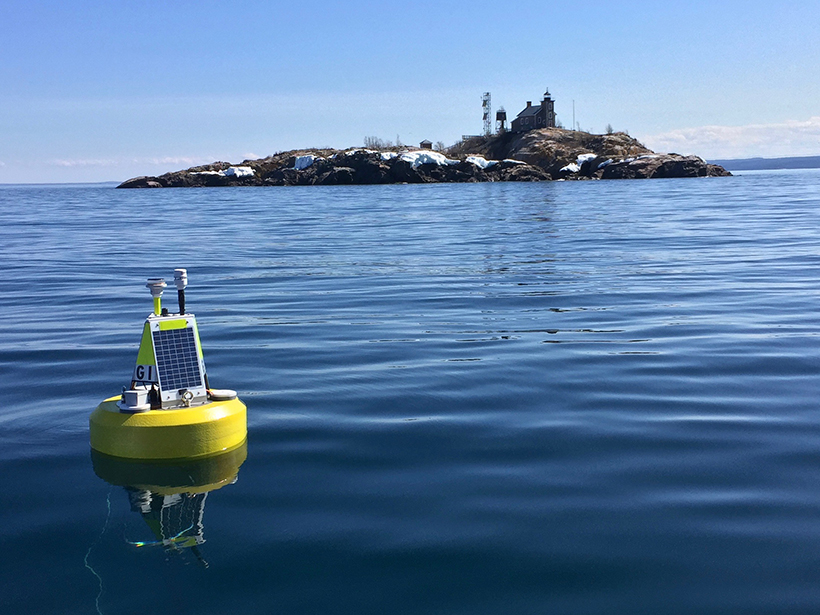Microbial mats in a Lake Huron sinkhole, combined with modeling work, suggest that the changing length of Earth’s day could have played a key role in oxygenating the atmosphere.
Great Lakes
Lake Erie Sediments: All Dredged Up with Nowhere to Grow
Agriculture is a key contributor to the algae mats that plague Lake Erie. With so many fertilizers entering the lake, could sediment from the lake floor be used to grow crops instead?
Scientists Hope Atmospheric Modeling Can Predict Meteotsunamis
The first extensively documented air pressure–driven meteotsunami on one of the Great Lakes presents an opportunity to use existing weather models to predict when these potentially deadly waves will strike.
Long Live the Laurentian Great Lakes
Living in Geologic Time: Billion-year-old rifting events set the stage for Earth’s greatest lakes.
New Analysis Helps Manage Risks to Shipping in the Great Lakes
Modeling of mysteriously fluctuating water levels in the Great Lakes has helped to optimize the prices of shipping insurance contracts along with investments in dredging navigation channels.
Great Lakes Cities’ Sewer Designs Mean Waste in the Waters
In older cities, a single system of pipes may transport sewage and stormwater runoff. As the climate crisis brings more intense storms, urban areas like Toronto are overhauling their drainage systems.
Mapping Nutrient Inputs in the Great Lakes Basin
A new tool links nitrogen and phosphorus applications to land use classifications to better understand where and how much of the nutrients enter watersheds in the U.S. Great Lakes Basin.
What Caused the Ongoing Flooding on Lake Ontario?
The floodwaters have also affected residents downstream along the Saint Lawrence River. Although politicians quickly blamed regulations, scientists say it was a perfect storm of natural factors.
Predicting a Great Lake's Response to a Warm Winter
The Superior Challenge Summit: Forecasting El Niño's Impact on the World's Largest Lake; Ann Arbor, Michigan, 17–19 May 2016
What Caused Record Water Level Rise in the Great Lakes?
A new modeling framework offers insight into how specific lakes' water levels respond to short- and long-term climate trends.

